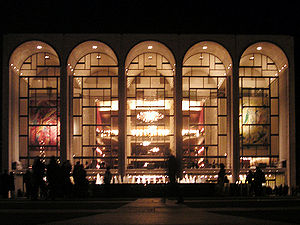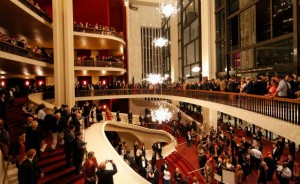Music of the Elysian Fields
Growing up in New Zealand, the Metropolitan Opera House in New York was the stuff of dreams: the tragic drama of the opera plots, the names of the great stars, the LP disks in my mother’s collection played over and over. To actually be there was an extraordinary sensation. “The whole place just breathes atmosphere,” I wrote to my parents, “the opulent decorations of a former era, and the shades of the singers who rose to fame on its stage – portraits of the greatest everywhere. “
Thursday, March 29, 1962 was our last night in New York before my husband Tony and I took ship for England to continue our youthful adventures. My sister Evelyn treated us to the opera tickets as a grand finale to our visit with her. The performance that evening was Gluck’s “Orfeo ed Euridice,” a very quiet, 18th century version of the story, with a happy ending. To quote from the Metropolitan Opera synopsis:
“Overcome with grief and remorse, the poet cries that life has no meaning for him without Euridice (“Che farò senza Euridice?”). Preparing to take his own life, he resolves to join his wife in death. Before he can do so Amor appears and announces that Orfeo has passed the tests of faith and constancy and restores Euridice to life. The happy couple returns to the upper world, where they are greeted by friends, who perform dances of celebration. Orfeo, Amor and Euridice praise the power of love.”
What stays in my memory is the dancing. As I wrote to my parents: “The ballets, particularly in the scene in the Elysian Fields, are really beautiful. I think it is the ballets that really make the opera – the terrific contrast between this scene and the previous one – the Furies at the entrance to Hades – all dressed in torn black tights, writhing and twisting, outlined against eerie red flames.”
Here is a YouTube recording of Gluck’s Elysian Fields ballet music.
If you’d like to learn more about the performers, here is a page from Opera News, March 10, 1962
I also found this March 1962 review by Irving Kolodin in the Saturday Review:
“On the whole, the visual aspects of this ‘Orfeo’ were more absorbing than the aural, for Harry Homer’s settings (of 1938) still provide an atmospheric frame for the action and Violette Verdy (a replacement for the absent Alicia Markova) is an excellent dancer, as is Arthur Mitchell, who shared the place of prominence with her. John Taras designed the choreography, which was theatrically justifying if somewhat showy, in its lifts and leaps, for the repose of the Elysian Fields.”
Maureen is exploring the contents of an old black filing cabinet in her attic, which contains 55 years of her writing notes


Lovely.